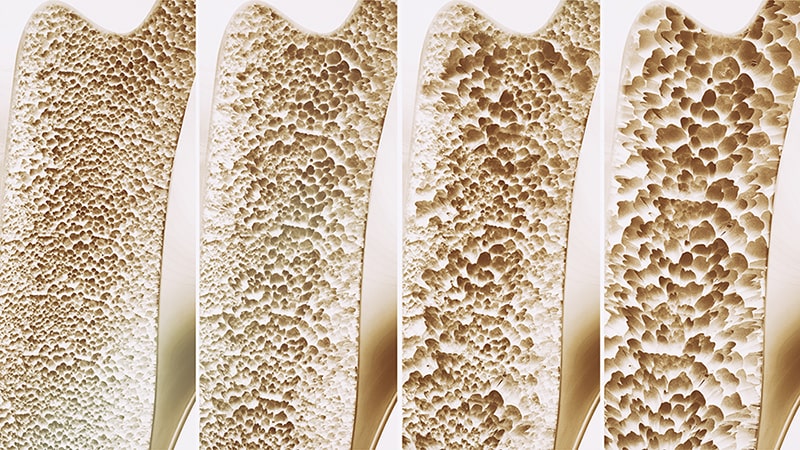OsteoporosisThinning or weakening of our bones significantly increases our risk for fractures (broken bones). People with osteoporosis are at higher risk of suffering hip, spine, and wrist fractures. Half of women over age 50 will have an osteoporosis-related fracture during their lifetime. These types of fractures, specifically hip or vertebral fractures, have a mortality (death) rate as high as 25-30%. Osteoporosis is a condition that generally occurs with age and has been labeled by some medical organizations as chronic and incurable.
|
How common is this condition?With the aging of the American population, the incidence of osteoporosis is becoming more common. It is estimated that at least 50% of American’s 50 and older are at a significant risk for osteoporosis and that over 10 million men and women have a diagnosis of osteoporosis. An additional 43 million Americans are thought to have low bone density and are headed toward osteoporosis without intervention.
|
Did you know?Healthy bone is made up of minerals and calcium salts that are held together by collagen fibers. The inside structure of our bones consists of a softer, spongy mesh that resembles a honeycomb.
Our bones are living tissues and are constantly disposing of old bone tissue and replacing it with new bone tissue. |
The Natural ProcessOver time the breakdown of old bone tissue and the formation of new bone changes. During childhood and young adult years, new bone is formed quickly, and our bones reach their peak bone density (strength) in our twenties. Starting around age 40, the breakdown of bone occurs more quickly than it can be replaced, leading to reduced bone density and potentially osteoporosis.
|
The Role Hormones Play
Estrogen // Research has found that women are about four times more likely than men to develop osteoporosis. The root cause for this is the reduction in hormone production, specifically estrogen, after menopause or surgical-induced (total hysterectomy) menopause. Estrogen has an antiresorptive quality, meaning it lessens the breakdown of bones.
Testosterone // Optimal levels of testosterone for males and females increase lean tissue mass (muscle mass) and reduces fat mass. Muscle mass exerts a greater load on our bones which activates bone forming sites on the periosteal bone surfaces. Therefore weight-bearing exercise is crucial to bone health because it increases our muscle mass, which stimulates bone formation (osteogenesis – new bone formation). This is also known as mechanical loading. Testosterone maintains and builds bone and is an excellent therapy for prevention and treatment of osteoporosis. Research studies have shown an increase of bone density by 8.3% per year in those treated with androgen (testosterone) pellet therapy.
Testosterone // Optimal levels of testosterone for males and females increase lean tissue mass (muscle mass) and reduces fat mass. Muscle mass exerts a greater load on our bones which activates bone forming sites on the periosteal bone surfaces. Therefore weight-bearing exercise is crucial to bone health because it increases our muscle mass, which stimulates bone formation (osteogenesis – new bone formation). This is also known as mechanical loading. Testosterone maintains and builds bone and is an excellent therapy for prevention and treatment of osteoporosis. Research studies have shown an increase of bone density by 8.3% per year in those treated with androgen (testosterone) pellet therapy.
A Treatment Option
Pellet therapy establishes optimal levels of estrogen and testosterone in our bodies and results in slower breakdown of bone and increased bone formation. This leads to higher bone density. Higher bone density helps protect our bodies from serious fractures and their mortality (death) rates. You don’t have to live with weak and brittle bones; with hormone optimization therapy we can keep your muscles and bones strong.
Let Us Partner in Your Wellness!
Schedule your first visit. We’ll do the necessary testing and create your personalized treatment plan.

